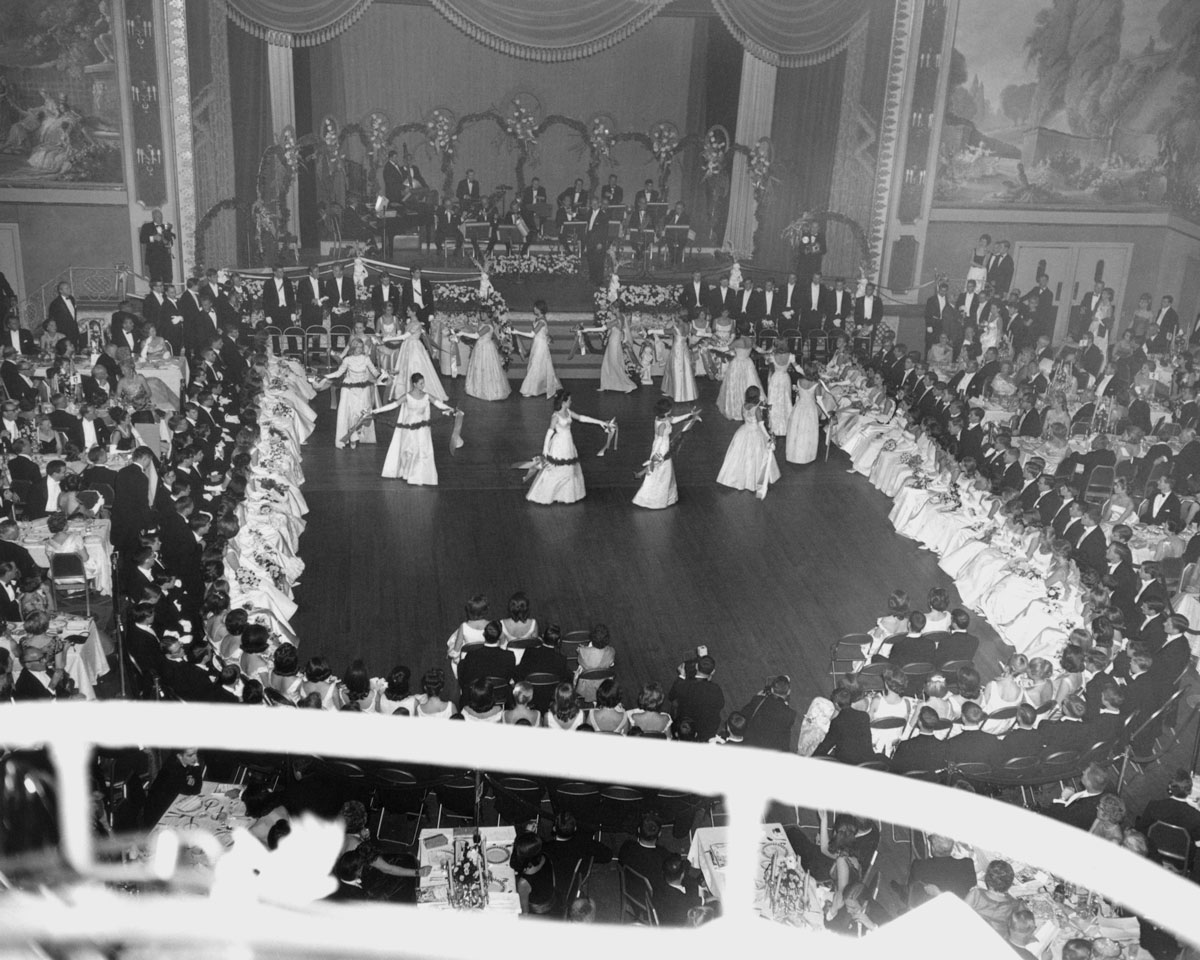Debutantes: When Glamour Was Born
by Megan Bedard
Images from © Debutantes: When Glamour was Born by Diana Oswald, Rizzoli New York, 2013.
Images from © Debutantes: When Glamour was Born by Diana Oswald, Rizzoli New York, 2013.
Images from © Debutantes: When Glamour was Born by Diana Oswald, Rizzoli New York, 2013.
Images from © Debutantes: When Glamour was Born by Diana Oswald, Rizzoli New York, 2013.
Debutantes: When Glamour Was Born
I’m Having a Ball
Glamour:
1. An air of compelling charm, romance, and excitement, especially when delusively alluring.
2. Archaic: A magic spell; enchantment.
Kim bats her synthetic lash extensions. Kanye drops to one Margiela-clad knee and slips a ten-pound ring across a gel-manicured finger, over a hairless knuckle. Half a dozen Kardashians gasp through painted lips, and from the heavens, Jesus descends. A flock of interracial cherubs follow, harps in hand, their dimpled cheeks turned northwest. An Instagram photo appears—the caption: YES!!!—showing Kim’s newly bejeweled hand under the stadium lights of AT&T Park, rented for the occasion. BANG! The Internet explodes.
This is nothing new. “The tradition of the debutante is not a twentieth-century phenomenon in the West,” says David Patrick Columbia, founder and editor of New York Social Diary, in the foreword of Diana Oswald’s new book, Debutantes: When Glamour Was Born (Rizzoli, 2013). “It is an ancient and tribal custom, dating back further than the fourteen-year-old Cleopatra being prepared to take the throne of Egypt.”
Which is to say: Though we haven’t always learned about them by way of a digital feeding frenzy, we have always been acutely aware of pretty rich girls of society coming of age and dragging the world in their wake. We (the universal “we”) can’t help ourselves. British art critic John Berge once noted that “Glamour cannot exist without personal social envy being a common and widespread emotion,” and it seems we’ve never run short on it.
Debutantes, a 154-page tome of historical imagery, brings the seed of this societal fascination to life, featuring the “coming out” balls of some of the world’s most famous debutantes. Before Kim (or Paris, or Nicole Richie) there was Brenda Frazier, Barbara Hutton, Gloria Vanderbilt. In the throes of the Depression Era, the girls were virginal, poised, and, with few exceptions, rich as hell. Newspaper coverage was obsessive: “Back then debutants were a feature,” says Oswald. “They weren’t just a page or two.”
Accompanying the impressive collection of vintage photos Oswald pulled from a slew of archives—girls in designer white gowns with immaculate posture flanked by equally polished young men in suits dancing, eating, and posing for the papers—are captions that feature a staggering list of designer labels and posh venues to play backdrop to the opulent displays of wealth: Christian Dior, Oscar de la Renta, Elizabeth Arden, Cartier; balls at the Waldorf, summer soirees in Newport, elaborate banquets at the Ritz.
“Everything was mentioned,” says Oswald, whose mother and grandmother appear in the photos. “Where the debutante was going to summer, when they were going to Europe, what dress they were going to wear, who their mother was, how many teas were being given to them, how many dinners, how many dances.”
It was the era when glamour—as we now know it in Hollywood circles, in all its intimate detail and societal obsession—was born.
It was also a time of tacit warring in high society’s inner chambers. “That’s the sort of the era where people were one-upping each other because it was new and that industrial money was coming through. Having a daughter was a chance for both the family and the daughter to enter society and it was really, really important to them to do that. Especially if they were going to fit in places like Newport and South Hampton and Palm Beach.”
Anymore, marriage is not the only ticket into high society, and the tradition has faded, replaced in some cases with even less savory means to a lavish end. Which is part of the appeal of revisiting the history of debutante balls. The tradition had its pitfalls, Oswald admits—namely, that the defunct method to precipitate marriage often had subsequent fallouts—but there was something special about that era, a refinement that was devoid of sex tapes, foam fingers, and reality TV.
“It’s definitely an emphatic society ritual that shouldn’t really be forgotten. You know, on the nice side, it was a really civilized time. It was just a civilized era where people got dressed up, where people really had manners. Beautiful invitations were sent out and weren’t emailed as paperless post…it all harkens back to a time that really is kind of lost, so it’s important to acknowledge that it existed and what it meant. Those were really the glamour days of Hollywood.”
Written by Megan Bedard




